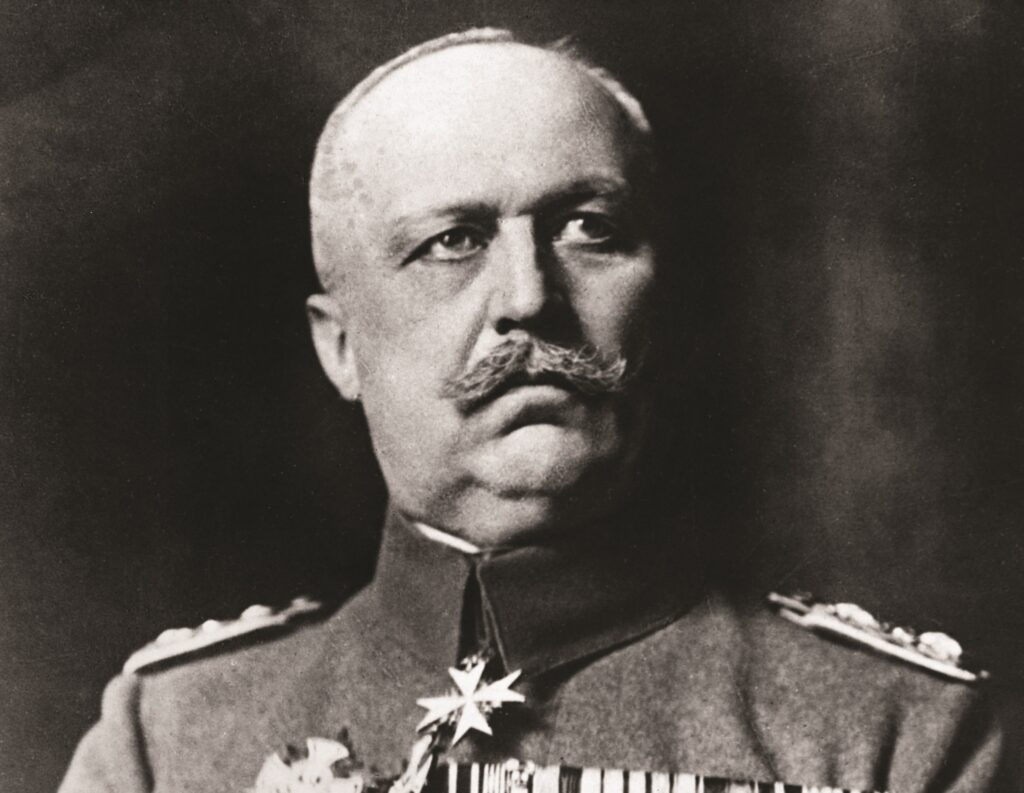Based on winning tactics from Verdun, the audacious 1917 attack was unexpectedly thwarted by Germany’s new, innovative defensive system and French intelligence failures
The Nivelle Offensive was a major offensive operation carried out by General Robert Nivelle, the newly appointed commander-in-chief of the French Armies. Using tactics which had brought success during the Battle of Verdun, Nivelle plotted an attack which he believed would break through the German lines in under 48 hours with just 10,000 casualties. Nivelle could not have been more wrong, with his operation turning into a bloody disaster, leading to a mutiny in the French Armies and his demotion.
French Intelligence Failures
On a cold night in January 1917, German infantry launched a raid at Main de Massiges, East of Reims, and came across plans to attack the Aisne River. General Erich Ludendorff declared it a “capital piece of information.”
The Germans’ alarm grew after another raid in March 1917 with the discovery of General Robert Nivelle’s “Instructions Concerning the Aim and Conditions of a General Offensive ” revealing the planned operation’s incredible scale. Despite these disastrous leaks, Nivelle continued widely circulated operational plans. The dam of Nivelle’s secrecy ultimately burst open with the capture of a sergeant carrying a document, detailing the movements of specific units.
That is not to say that Nivelle ever protected intelligence on the offensive. While lobbying for support, he showed the press and politicians his ambition and promised a breakthrough within 48 hours. The press and the Chamber of Deputies then publicly debated aspects of his proposal.
It was said every waiter in Paris knew about the coming action. Yet Nivelle’s openness with the French political and media establishment made his rise to Commander-in-Chief possible. The French needed a charismatic and politically acceptable alternative to General Joseph Joffre, who had resisted any attempts from politicians to interfere in military matters.
Planning the Nivelle Offensive
Nivelle wasn’t just an effective lobbyist, but a respected general who had cut his teeth at Verdun. There, he had ended localised stalemates by deploying overwhelming violence concentrated on weak points in the enemy line. By removing the need to attack along the whole front, Nivelle hoped to bring the long, grinding battles that defined the Western Front to an end. Nivelle’s offensive began to take shape, translating his Verdun tactics on a larger scale onto a front between the bastions of Soissons and Reims.

(Photo by The Print Collector/Print Collector/Getty Images)
Nivelle chose the Chemin des Dames as the site for the battle, a road hugging the plateau north of the Aisne River. The ancient route was paved by King Louis XV, so that his daughter could visit one of her ladies in waiting – later it would be the site of an earlier critical battle, during another invasion of France, in 1814. 62 miles (100 km) from Paris, it naturally blocked the most direct route to the capital.
The sector had been quiet since 1914 and Nivelle hoped to stretch its relatively small defensive force through Allied attacks elsewhere. These were primarily at Vimy Ridge and Arras from the British and Canadian forces and Nivelle was pushing for further attacks from the Russians and Italians.
Then, his 52 divisions and 7,000 big guns could smash through the German lines, advancing 6.2 miles (10 km) each day, turning the static Western Front to a victorious conclusion. Convinced his triumph was inevitable, Nivelle promised “a splendid harvest of glory for the British and French armies.”
Related: Peter Jackson talks “They Shall Not Grow Old” and First World War family history
Defense in Depth
By April 1917, Nivelle’s masterstroke tactic at Verdun was already outdated, designed to exploit the German army’s tactic of deploying a single, unbreakable line, with no room for withdrawal and in range of French artillery. In response, General Erich Ludendorff published The Principles of Command in the Defensive Battle in Position Warfare, which detailed the defense in depth doctrine.

(Photo by © Hulton-Deutsch Collection/CORBIS/Corbis via Getty Images)
Related: Learn more about Ludendorff in World War 1 Leaders: The 10 Greatest German Generals of 1914-1918
Anticipating Nivelle’s tactic at Chemin des Dames, Ludendorff ordered his forces to pull back to the Hindenburg Line, leaving only an ‘outpost’ sector in the range of French artillery. It was just 0.6 miles (1 km) deep and loosely defended to reduce casualties. Ludendorff commanded these ‘outpost’ defenders to weaken the French charge before it reached the ‘battle’ sector – a far superior defensive area up to 1.2 miles (2 km) deep and positioned on the reverse slope of hills to ensure surprise and protection from artillery.

(Photo by © Hulton-Deutsch Collection/CORBIS/Corbis via Getty Images)
Ludendorff filled the ‘battle’ sector with machine gun posts and concrete pill boxes that could take a direct hit from an artillery shell. Communication trenches connected the positions to transfer the wounded and create bottlenecks in the enemy’s advance.
Men in defensive positions were drilled in the doctrine of elastic defense, falling back under attack before Eingreif-Divisionen (intervention divisions) would spring back in counter-attack to reclaim the lost ground. Finally, the rearward sector stretched back as far as possible, holding support facilities and heavy artillery.
Defence in depth meant disaster for Nivelle’s men, who were forced to attack up and over the Chemin des Dames ridge line. They would have to cover up to 6.2 miles (10 km), climb 600 vertical feet (180 meters) of steep Aisne Valley hills and clear fortified positions before they reached the rearward sector.

(Photo by adoc-photos/Corbis via Getty Images)
To read more on the Nivelle Offensive, pick up issue 131 of History of War
